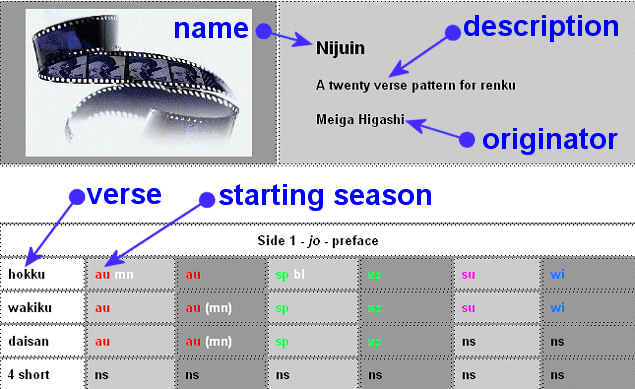
The table is laid out in columns. At left the verse positions are named or numbered. The verse length is also indicated. Subsequent columns give a typical layout for a poem begun in a particular season. Pick your season/column and follow down.
Many more variants are possible than can be shown. By way of illustration sequences taking autumn or spring as their starting point are each provided with two complete layouts.
Persons new to renku are advised to adhere to the suggested layouts. Swapping back and forth between columns is not recommended.

Season
positions
are colour coded au
autumn, sp
spring,
su
summer, wi
winter.
Non-season positions are coded ns.
Topic positions are shown in white. Moon and blossom
(or flower) appear in association with a season. Love may readily appear
in association with either season or non-season positions.
Optional topic positions are shown in white brackets.
The choice is either/or. In the example above spring moon will appear
in the hokku or the wakiku.

Season
options are indicated by adjoining symbols. The choice
is either/or. In the example above the verse arrowed will be non-season
or summer (in this instance it also happens to be a love position).
Exercising a season option frequently has consequences
for subsequent verses.
In the example above if non-season is chosen for verse 4 then verse 5
will be 'summer', and vice versa. Please refer to the notes accompanying
each schema for specific information.
The most common option is shown first. In the example
above at left verses 4, 5 and six would most readily be non-season, winter
and non-season respectively. The less common sequence would be winter,
non-season, non-season.